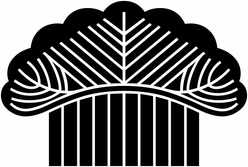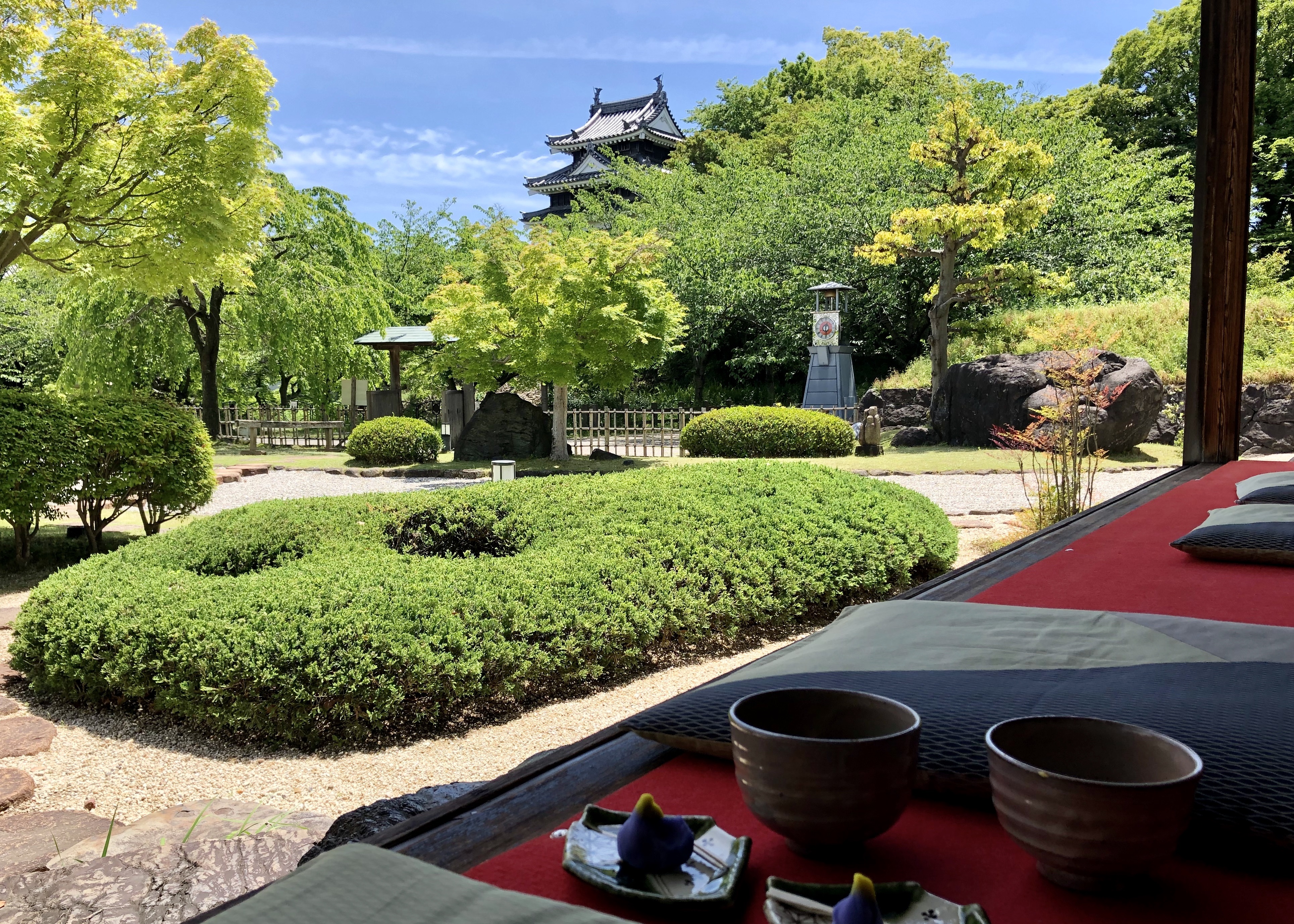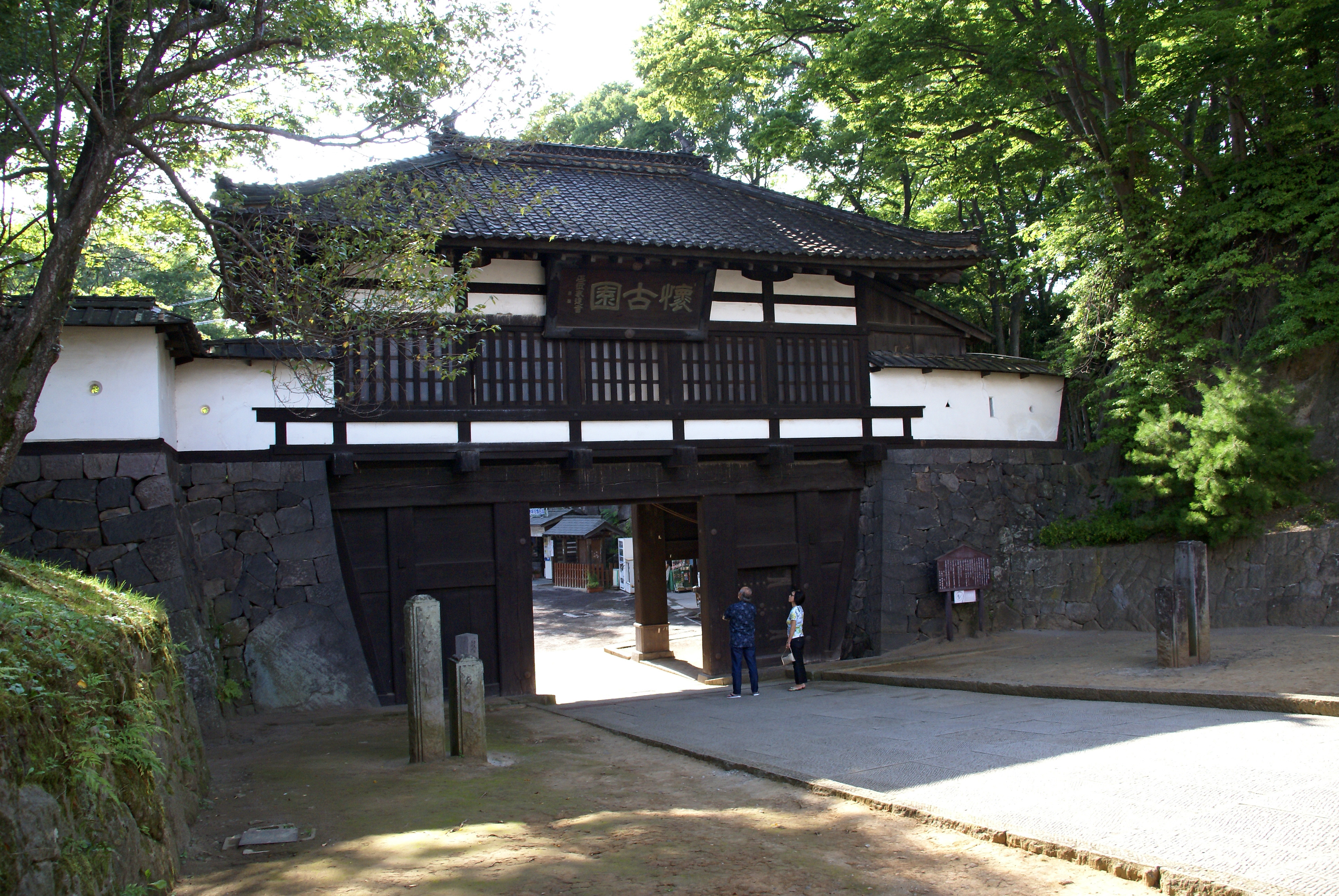|
Nishio Clan
was a Japanese samurai kin group. Papinot, Jacques Edmond Joseph. (1906). ''Dictionnaire d’histoire et de géographie du Japon''; Papinot, (2003)"Nishio," ''Nobiliare du Japon'', p. 42 retrieved 2013-5-5. History The clan claims descent from the Kira clan, a branch of the Seiwa Genji line. Kira Yoshitsugu, a son of Kira Mochihiro, served under Oda Nobunaga, Toyotomi Hideyoshi and Tokugawa Ieyasu adopted the family name of Nishio. Under the Tokugawa shogunate, the Nishio, as hereditary vassals of the Tokugawa clan, were classified as one of the '' fudai'' ''daimyō'' clans.Appert, Georges. (1888) ''Ancien Japon,'' p. 75/ref> Nishio Yoshitsugu was given the 12,000 ''koku'' Haraichi Domain in Musashi Province in 1602. His son, Nishio Tadanaga was transferred to the 20,000 ''koku'' Shirai Domain in Kōzuke Province in 1616, and subsequently to Tsuchiura Domain (Hitachi Province) from 1617-1649. The clan then ruled Tanaka Domain (Suruga Province) from 1649-1679, Komoro Domain (S ... [...More Info...] [...Related Items...] OR: [Wikipedia] [Google] [Baidu] |
Nishio Kamon
is a city located in Aichi Prefecture, in the Chūbu region of Japan. , the city had an estimated population of 169,984 in 65,553 households, with a population density of 1,054 persons per km². The total area of the city was . It is a regional commercial and manufacturing center and the country's leading producer of powdered green tea. Geography Nishio is situated on the northern coast of Mikawa Bay on the Pacific Ocean in southern Aichi Prefecture. The city lies along the eastern bank of the Yahagi River. Sheltered by Chita Peninsula and Atsumi Peninsula, the local climate is mild. Parts of the city lie within the borders of the Mikawa Wan Quasi-National Park Climate The city has a climate characterized by hot and humid summers, and relatively mild winters (Köppen climate classification ''Cfa''). The average annual temperature in Nishio is 15.7 °C. The average annual rainfall is 1596 mm with September as the wettest month. The temperatures are highest on average ... [...More Info...] [...Related Items...] OR: [Wikipedia] [Google] [Baidu] |
Musashi Province
was a province of Japan, which today comprises Tokyo Metropolis, most of Saitama Prefecture and part of Kanagawa Prefecture. It was sometimes called . The province encompassed Kawasaki and Yokohama. Musashi bordered on Kai, Kōzuke, Sagami, Shimōsa, and Shimotsuke Provinces. Musashi was the largest province in the Kantō region. History Musashi had its ancient capital in modern Fuchū, Tokyo, and its provincial temple in what is now Kokubunji, Tokyo. By the Sengoku period, the main city was Edo, which became the dominant city of eastern Japan. Edo Castle was the headquarters of Tokugawa Ieyasu before the Battle of Sekigahara and became the dominant city of Japan during the Edo period, being renamed Tokyo during the Meiji Restoration. ''Hikawa-jinja'' was designated as the chief Shinto shrine (''ichinomiya'') of the province; and there are many branch shrines. The former province gave its name to the battleship of the Second World War. Timeline of important events * ... [...More Info...] [...Related Items...] OR: [Wikipedia] [Google] [Baidu] |
Kazoku
The was the hereditary peerage of the Empire of Japan, which existed between 1869 and 1947. They succeeded the feudal lords () and court nobles (), but were abolished with the 1947 constitution. Kazoku ( 華族) should not be confused with ''"kazoku ( 家族)"'', which is pronounced the same in Japanese, but with a different character reading that means "immediate family" (as in the film ''Kazoku'' above). Origins Following the Meiji Restoration of 1868, the ancient court nobility of Kyoto, the , regained some of its lost status. Several members of the , such as Iwakura Tomomi and Nakayama Tadayasu, played a crucial role in the overthrow of the Tokugawa shogunate, and the early Meiji government nominated to head all seven of the newly established administrative departments. The Meiji oligarchs, as part of their Westernizing reforms, merged the with the former into an expanded aristocratic class on 25 July 1869, to recognize that the and former were a social class d ... [...More Info...] [...Related Items...] OR: [Wikipedia] [Google] [Baidu] |
Awa Province (Chiba)
was a province of Japan in the area of modern Chiba Prefecture. Nussbaum, Louis-Frédéric. (2005). "''Awa no Kuni''" in . It lies on the tip of the Bōsō Peninsula (房総半島), whose name takes its first ''kanji'' from the name of Awa Province and its second from Kazusa and Shimōsa Provinces. Its abbreviated form name was or . Awa Province in Shikoku phonetically has the same name, but is written with different ''kanji'' (阿波国). Awa is classified as one of the provinces of the Tōkaidō. Under the ''Engishiki'' classification system, Awa was ranked as a "middle country" (中国) and a "far country" (遠国). History Awa was originally one of four districts of Kazusa Province. It was well-known to the Imperial Court in Nara period Japan for its bountiful seafoods, and is mentioned in Nara period records as having supplied fish to the Court as early as the reign of the semi-legendary Emperor Keikō. On May 2, 718 the district of Awa was elevated into status to a ... [...More Info...] [...Related Items...] OR: [Wikipedia] [Google] [Baidu] |
Hanabusa Domain
was a Japanese feudal domain of the early Meiji period, located in Nagasa District, Awa Province. It was centered at what is now the area of the city of Kamogawa in modern Chiba Prefecture. History In 1867, during the Meiji Restoration, the final ''shōgun'', Tokugawa Yoshinobu resigned his office to Emperor Meiji and leadership of the Tokugawa clan to Tokugawa Iesato. In 1868, Iesato was demoted in status to that of an ordinary ''daimyō'', and assigned the newly created Shizuoka Domain, which included all of former Sunpu Domain, neighboring Tanaka and Ojima Domains, and additional lands in Tōtōmi and Mutsu Provinces for a total revenue of 700,000 ''koku''. The new domain covered the western two-thirds of Shizuoka Prefecture, plus the Chita Peninsula in Aichi Prefecture. In the process, the existing ''daimyōs'' in Suruga and Tōtōmi Provinces were displaced. This included the eighth (and final) ''daimyō'' of Yokosuka Domain, Nishio Tadaatsu. As Tadaatsu had proved h ... [...More Info...] [...Related Items...] OR: [Wikipedia] [Google] [Baidu] |
Meiji Restoration
The , referred to at the time as the , and also known as the Meiji Renovation, Revolution, Regeneration, Reform, or Renewal, was a political event that restored practical imperial rule to Japan in 1868 under Emperor Meiji. Although there were ruling emperors before the Meiji Restoration, the events restored practical abilities and consolidated the political system under the Emperor of Japan. The goals of the restored government were expressed by the new emperor in the Charter Oath. The Restoration led to enormous changes in Japan's political and social structure and spanned both the late Edo period (often called the Bakumatsu) and the beginning of the Meiji era, during which time Japan rapidly Industrialisation, industrialized and adopted Western culture, Western ideas and production methods. Foreign influence The Japanese knew they were behind the Western powers when US Commodore (United States), Commodore Matthew C. Perry came to Japan in 1853 in Black Ships, large warshi ... [...More Info...] [...Related Items...] OR: [Wikipedia] [Google] [Baidu] |
Tōtōmi Province
was a province of Japan in the area of Japan that is today western Shizuoka Prefecture. Nussbaum, Louis-Frédéric. (2005). "''Tōtōmi''" in . Tōtōmi bordered on Mikawa, Suruga and Shinano Provinces. Its abbreviated form name was . The origin of its name is the old name of Lake Hamana. History Tōtōmi was one of the original provinces of Japan established in the Nara period under the Taihō Code. The original capital of the province was located in what is now Iwata, and was named Mitsuke – a name which survived into modern times as Mitsuke-juku, a post station on the Tōkaidō. Under the ''Engishiki'' classification system, Tōtōmi was ranked as a "superior country" (上国) in terms of importance, and one of the 16 "middle countries" (中国) in terms of distance from the capital. During the early Muromachi period, Tōtōmi was ruled nominally by the Imagawa clan before coming under control of the Shiba clan._However,_by_the_Sengoku_period.html" ;"title="DF ... [...More Info...] [...Related Items...] OR: [Wikipedia] [Google] [Baidu] |
Yokosuka Domain
was a feudal domain under the Tokugawa shogunate of Edo period Japan, located in Tōtōmi Province. It was centered at Yokosuka Castle in what is now the Matsuo district of the city of Kakegawa in Shizuoka Prefecture."Tōtōmi Province" at JapaneseCastleExplorer.com retrieved 2013-8-14. History In February 1601, Ōsuga Tadamasa, lord of in , was allowed by |
Shinano Province
or is an old province of Japan that is now Nagano Prefecture. Shinano bordered on Echigo, Etchū, Hida, Kai, Kōzuke, Mikawa, Mino, Musashi, Suruga, and Tōtōmi Provinces. The ancient capital was located near modern-day Matsumoto, which became an important city of the province. The World War II–era Japanese aircraft carrier ''Shinano'' was named after this old province. Historical record In 713, the road that traverses Mino and Shinano provinces was widened to accommodate increasing numbers of travelers through the Kiso District of modern Nagano Prefecture. In the Sengoku period, Shinano Province was often split among fiefs and castle towns developed, including Komoro, Ina, and Ueda. Shinano was one of the major centers of Takeda Shingen's power during his wars with Uesugi Kenshin and others. Suwa taisha was designated as the chief Shinto shrine (''ichinomiya'') for the province. [...More Info...] [...Related Items...] OR: [Wikipedia] [Google] [Baidu] |
Komoro Domain
was a feudal domain under the Tokugawa shogunate of Edo period Japan. It is located in Shinano Province, Honshū. The domain was centered at Komoro Castle, located in what is now part of the city of Komoro in Nagano Prefecture."Shinano Province" at JapaneseCastleExplorer.com retrieved 2013-5-13. History The area which later became Komoro Domain was repeated contested between the , the and the |
Suruga Province
was an old province in the area that is today the central part of Shizuoka Prefecture. Suruga bordered on Izu, Kai, Sagami, Shinano, and Tōtōmi provinces; and was bordered by the Pacific Ocean through Suruga Bay to the south. Its abbreviated form name was . History Early period Suruga was one of the original provinces of Japan established in the Nara period under the Taihō Code. The original capital of the province was located in what is now Numazu, which also had the ''Kokubun-ji'' and the Ichinomiya ( Mishima Taisha) of the province. Under the ''Engishiki'' classification system, Suruga was ranked as a "major country" (上国), and was governed by a ''Kuni no miyatsuko'' and under the ''ritsuryō'' system was classed as a "middle country" (中国) In a 680 AD cadastral reform, the districts forming Izu Province were administratively separated from Suruga, and the provincial capital was relocated to the right bank of the Abe River in what is now Shizuoka City. Medi ... [...More Info...] [...Related Items...] OR: [Wikipedia] [Google] [Baidu] |
Tanaka Domain
was a feudal domain under the Tokugawa shogunate of Edo period Japan, located in Suruga Province in what is now modern-day Fujieda, Shizuoka. It was centered around Tanaka Castle. "Suruga Province" at JapaneseCastleExplorer.com retrieved 2013-4-10. Tanaka Domain was controlled by a large number of '''' clans in the course of its history, seldom for more than one generation. History Tanaka Castle was built by the as a subsidiary fortification guarding the eastern approaches to |






